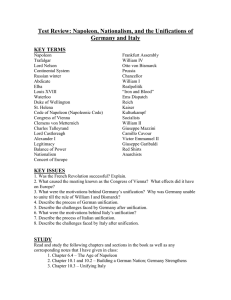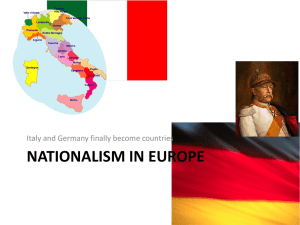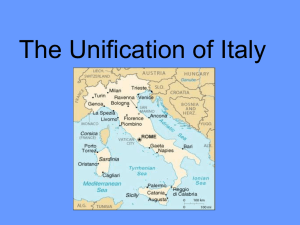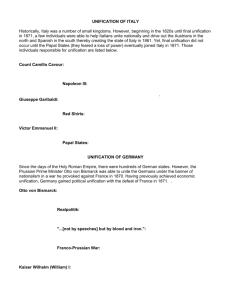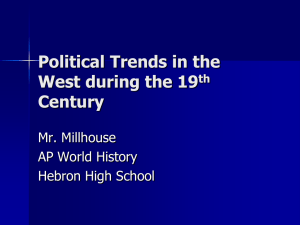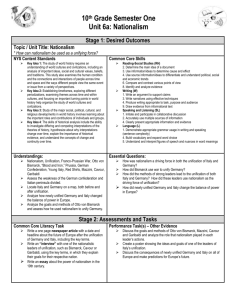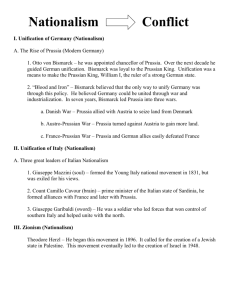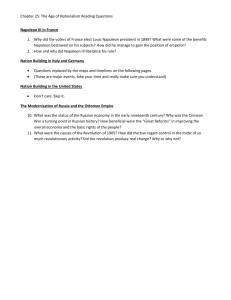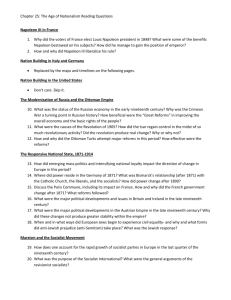Revolutions in Europe and Unification
advertisement
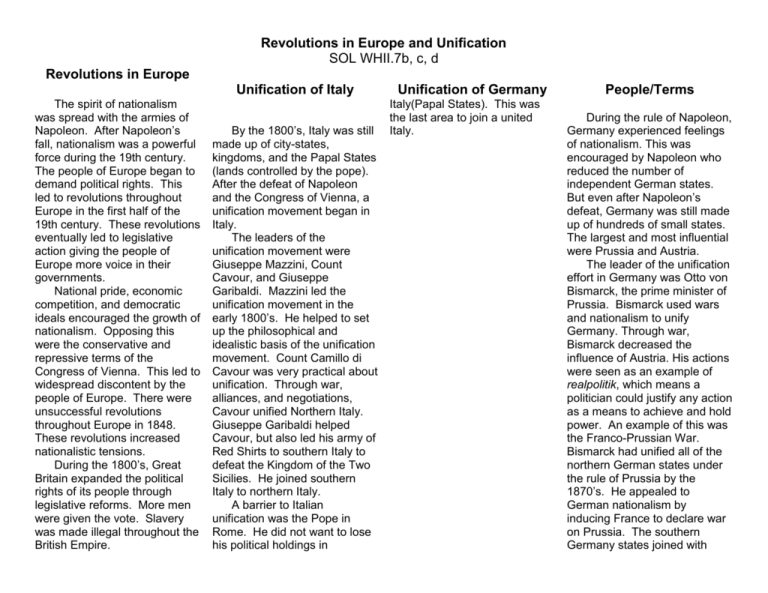
Revolutions in Europe and Unification SOL WHII.7b, c, d Revolutions in Europe Unification of Italy The spirit of nationalism was spread with the armies of Napoleon. After Napoleon’s fall, nationalism was a powerful force during the 19th century. The people of Europe began to demand political rights. This led to revolutions throughout Europe in the first half of the 19th century. These revolutions eventually led to legislative action giving the people of Europe more voice in their governments. National pride, economic competition, and democratic ideals encouraged the growth of nationalism. Opposing this were the conservative and repressive terms of the Congress of Vienna. This led to widespread discontent by the people of Europe. There were unsuccessful revolutions throughout Europe in 1848. These revolutions increased nationalistic tensions. During the 1800’s, Great Britain expanded the political rights of its people through legislative reforms. More men were given the vote. Slavery was made illegal throughout the British Empire. By the 1800’s, Italy was still made up of city-states, kingdoms, and the Papal States (lands controlled by the pope). After the defeat of Napoleon and the Congress of Vienna, a unification movement began in Italy. The leaders of the unification movement were Giuseppe Mazzini, Count Cavour, and Giuseppe Garibaldi. Mazzini led the unification movement in the early 1800’s. He helped to set up the philosophical and idealistic basis of the unification movement. Count Camillo di Cavour was very practical about unification. Through war, alliances, and negotiations, Cavour unified Northern Italy. Giuseppe Garibaldi helped Cavour, but also led his army of Red Shirts to southern Italy to defeat the Kingdom of the Two Sicilies. He joined southern Italy to northern Italy. A barrier to Italian unification was the Pope in Rome. He did not want to lose his political holdings in Unification of Germany Italy(Papal States). This was the last area to join a united Italy. People/Terms During the rule of Napoleon, Germany experienced feelings of nationalism. This was encouraged by Napoleon who reduced the number of independent German states. But even after Napoleon’s defeat, Germany was still made up of hundreds of small states. The largest and most influential were Prussia and Austria. The leader of the unification effort in Germany was Otto von Bismarck, the prime minister of Prussia. Bismarck used wars and nationalism to unify Germany. Through war, Bismarck decreased the influence of Austria. His actions were seen as an example of realpolitik, which means a politician could justify any action as a means to achieve and hold power. An example of this was the Franco-Prussian War. Bismarck had unified all of the northern German states under the rule of Prussia by the 1870’s. He appealed to German nationalism by inducing France to declare war on Prussia. The southern Germany states joined with Prussia against France creating the new German state. Count Cavour--unified the northern Italian states Giuseppe Garibaldi--joined the southern Italian states to Cavour’s united northern Italian states. Pope--resisted efforts to unify Italy. The Papal States were the last to unify with the rest of Italy. Otto von Bismarck--prime minister of Prussia who used war and feelings of nationalism to unify the German states. Realpolitik--this justified any action which helped a ruler to achieve and hold power nationalism-- The belief that people who share common land, traditions, language, religion, and blood belong together in a state of self-rule.
